Dr. Radko Tichavsky is a Czech born Mexican Agrohomeopath. He is a co-founder and director of Instituto Comenius in Mexico and author of Handbook of Agrohomeopathy, 2007 (Spanish) and Homeopathy for Plants, 2009 (Spanish), Organon de la Holohomeopatía and creator and teacher of Holohomeopathy.
He is now offering a one-semester virtual course in Holohomeopathy (in English). You can learn how to define and analyze holons and how to repertorize the specific homeopathic treatment beyond just disease or pest names. You can find out more here: www.icomenius.edu.mx
Many readers asked about Radko Tichavsky’s books. Below is a photo of them. They are available Spanish, Italian and Portuguese. For ordering or information: [email protected]
Editor’s Note: JT (Jenichen/Tichavsky) potency is often mentioned below. It is a centesimal dilution followed by 500 succussions or five hundred continuous turns with a wooden stick to the right and 500 turns to the left (if handling larger volumes). The JT potency frequently has a better reaction in plants and it is very important in preparation of live bionosodes.
Hello Mr. Tichavsky,
My white lilac bush has a problem with brown spots. They appear even as it is blooming, so it isn’t because the flowers are spent. This is at least the third year it has had this problem.
We live in NW Washington State, USA, just about 30 minutes south of the Canadian border. The weather is clearly changing here – might that be the cause? Could you please tell me what homeopathic remedy it needs, or whether it simply needs fertilizer?
The climate here in the Pacific Northwest in general: cool, moist.
Winters now are much colder likely due to climate change, sometimes going down to maybe 10 degrees Fahrenheit.
Thank you,
Linda S.
Radko Tichavsky:
Dear Linda,
Syringa vulgaris is a shrub that does not require special fertilization conditions. From the picture it looks more like a bacterial disease caused by Pseudomonas syringae pv. syringae a gram negative bacterium that can affect not only flowers but also leaves.
You don’t say how old your plant is, and this is also important to consider as Lilacs have a relatively long life span 30-60 years. But in older plants the conditions can be exacerbated, this is due to a natural process where the plant is invaded by microorganisms, fungi and bacteria to prepare for their next reintegration into the soil.
If your plant is not that old, then you can apply live bionosodes of Bacillus subtilis and Pantoea agglomerans which are the antagonistic bacteria of Pseudomonas syringae pv. syringae.
You can find them in Aloe vera gel, in the root of Cymbopogon citratus, in the leaf and roots of Moringa oleifera, in coconut water (Cocos nucifera), in the rhizome of Zingiber officinale, in the root of Punica granatum, in the fruit of Carica papaya, in the root of Daucus carota, and in the bulb of Allium sativum.
Prepare live bionosode from one of these options, i.e. : wash well the part of the plant used; liquefy the material in a blender with mineral water; filter and dynamize the liquid at low potency (e.g. 2-3 JT) and apply by spray on the tree.
You can repeat the application every three days until the condition subsides and new, unaffected buds and flowers appear. Usually, three applications are sufficient. Subsequently apply Silicea terra 6 CH by spraying to induce systemic resistance of the plant to the next infections. In this way you will again enjoy the beautiful flowers and aroma of Lilac bush.
Dear Dr. Radko,
Have you encountered the Asian jumping worms yet? They are a real problem here in New England. They can eat an inch of heavy maple chip mulch in a about 10 days or less. In my experience plants which have been transplanted with deep enough roots are fine, but planting seeds is another story. I am having very poor results getting carrots, and beets to make it past germination and if they do, in growing much at all. It seems that birds will not eat these worms, but moles and snakes will. I’m not sure I want to invite lots of moles into my garden!
Any thoughts?
Thank you
Spero Latchis, CCH.
Radko Tichavsky:
Dear Spero,
Amynthas agrestis (jumping worms) are a real and serious problem. This species of worm is exotic, native to Japan and the Korean Peninsula brought to America and Europe in the 19th century. This worm is epigeic, meaning it lives relatively close to the surface and feeds on decaying material and soil in the first layer of soil, but also affects roots of various crops.
The soil can be infected by the application of compost moved from other places, and in pots with plants acquired in nurseries for example. The allopathic way to eliminate A. agrestis is to set fire to the soil surface, but this also affects the soil structure, raises the pH and destroys the microbiota and does not completely resolve the invasion.
It is known that high temperature equal or higher than 40 degrees Celsius affects the adults and cocoons. For holohomeopathic treatment you have first collect the jumping worms manually in your field by applying 10 grams of mustard to each liter of water and irrigate the infested parts of the field with this remedy.
Minutes after the application all the worms will emerge to the surface. You can collect them and offer them as food to the chickens or ducks. This procedure can be repeated periodically to monitor the presence of jumping worms.
After this first step you should focus on homeopathic treatments aimed at eliminating the worm cocoons. To give you an idea, each worm lays about 80 cocoons every twenty days. To control completely the population of jumping worms you require some charcoal and diatomaceous earth.
Make a mixture (50/50) and grind it finely in a ceramic laboratory mortar for half an hour. Get yourself an ultrasonic bath (there are very cheap ones on the internet and they are commonly used to clean jewelry), let the mixture of the two powders dissolve in water and pass 10 minutes in the ultrasound, and then filter the content, recovering the liquid without solids. In this way you make a nano-remedy. Then dynamize this nano-remedy at 3 CH potency and apply in irrigation on the affected soil.
Hi Dr. Tichavsky,
I live in Tx and our oak trees have suffered greatly since the Arctic storm we had in Feb, 2021. One of ours never came back and 2 had rotted bark so bad we had to cut them down. The 2 seemingly healthy trees left are now showing bark rot. I don’t want to lose them. I’m not sure what disease I’m dealing with. Can homeopathy help?
Thank you!
Amanda Ridout
Ridout Health & Homeopathy PMA
Radko Tichavsky:
Dear Amanda,
You can clean the wounds with a knife and apply a mixture of lime and copper sulfate to avoid the possibility of secondary fungal infections. Then apply Berberis vulgaris at 6 CH potency in the irrigation water twice, a month apart.
Look for an old and very leafy oak tree in your community, remove some top soil from under it (first 5 centimeters with all the leaves and organic material from the surface.) Place the soil in a cloth bag and dip the closed bag repeatedly into the water to extract beneficial mycorrhizal fungal spores.
Dissolve the liquid in a ratio of 1:100 and make 500 turns with a wooden stick to the right and 500 turns to the left, then apply around the trunks of your trees.
It is very common for unmycorrhized oaks to suffer frost damage, but once you share the right mycorrhizae (very old trees have them) your trees will recover quickly and will be inoculated against subsequent frosts in the future.
Dear Dr. Tichavsky,
As a novice gardener, I am looking for preventative measures that I can use to keep my Calabrese plants (broccoli) free of pests. The plants are planted in large pots and watered regularly. Any advice on what I can do to protect the young plants please?
Many thanks for all you do.
Grace
Grace DaSilva-Hill www.healingwithgrace.co.uk
Radko Tichavsky:
Dear Grace,
To start with you can do an intercrop with Sesamum indicum, the interaction of Arbuscular mycorhiza (AM) will benefit both plants and decrease the possibility of pathogen attacks. You can also apply Ferrum phosphoricum 6 CH foliarly, and also extract some topsoil from Populus sp. and prepare a teacompost.
Put a small amount of soil and leaves in a textile bag, tie it and suspend it repeatedly in a little non-chlorinated water. Then dynamize this water to 3 JT potency in non-chlorinated water and apply it as irrigation water and to spray it on your broccolis.
In this way you will inoculate Trichoderma harzianum (an entomopathogenic fungus) on your plants and this fungus will attract other beneficial fungi and bacteria so that the protection of your plants will be complete.
Hi Dr. Tichavsky,
I have an apple tree in a small yard and it’s likely had cold damage from winters (zone 4B-5A). The trunk is split and a few branches have splits on them too. There’s a length of the trunk that is covered in white (see picture), as well as a hole at the base of the trunk.
Where the trunk branches out, there are a lot of ants and more white stuff. I’ve lived here two years and the fruits do grow to maturity but we get bitter pit I believe, and there are less and less flowers (likely due to improper pruning).
Can we rescue her? Getting her pruned today in fact so will give Arnica to start.
see photos below)
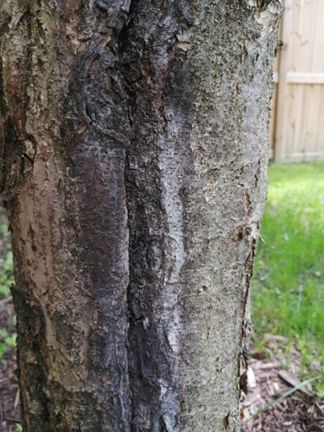
Thank you!!
Danielle
Radko Tichavsky:
Dear Danielle,
The application of Arnica montana alone will have little impact, as your apple trees have a secondary infection of a cluster of fungi. Suitable remedies to try to rescue your trees are for example Berberis vulgaris 6 CH and Thymus vulgaris 6 CH in this case, and also one application of Silicea terra 200 CH.
You should also prepare some IAA (Indole acetic acid) to stimulate new growth in the tree and deployment of their natural defenses. You can prepare a corn sprout, once the seeds germinate after about two weeks. Blend the seeds and the sprouts, filter the content, dynamize the liquid part at 3 CH potency and apply in irrigation around the trunks, after sunset, because IAA is very sensitive to ultraviolet rays.
Aloe vera, prepared from the gel of the leaves in the form of live bionosode at 4 JT potency will also help your trees to revive.
Dear Dr. Tichavsky,
My farm grows sugarcane but now we have too many black bugs in summer. I live in the North West part of India, Uttar Pradesh. Can I deal with this using homoeopathy? (see photo below)
Thank you
Aditi Beniwal
Radko Tichavsky:
Dear Aditi,
Black bugs are insects that can do a lot of damage to plants belonging to the Poacea family to which sugar cane belongs, they are sap suckers. We use Piper nigrum (mother tincture is made from the leaves).
It is dynamized to the potency between 4-6 CH and applied with Opuntia ficus indica sap as an adjuvant by spraying. Apply 50 liters of homeopathic remedy for hectar.
If you do not get Piper nigrum you can also use P. peepuloides, P. thomsoni, P. sylvaticum and other plants from Piper family present in your area to elaborate the remedy.


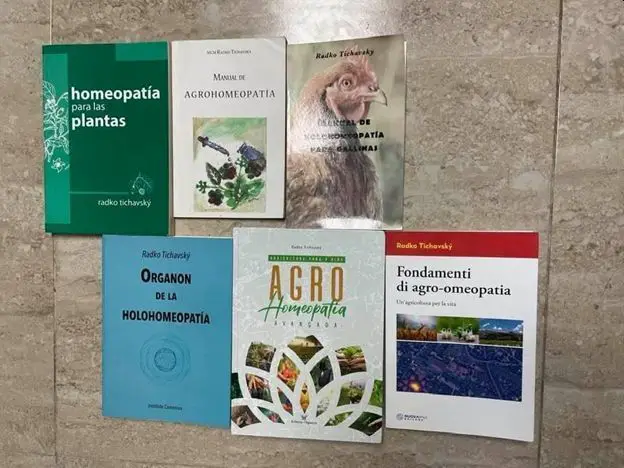

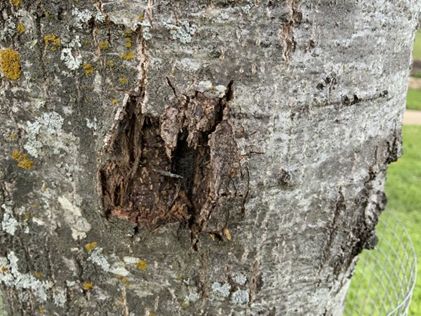
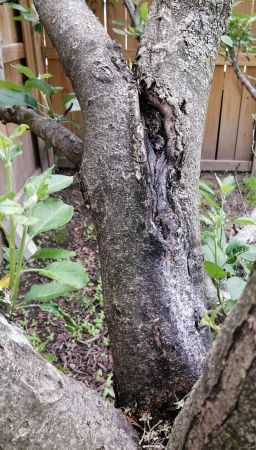
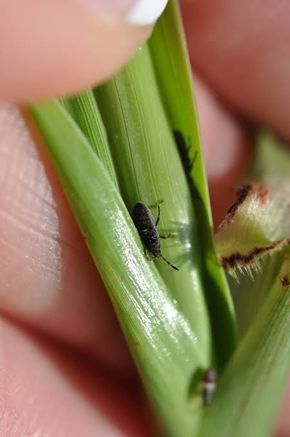
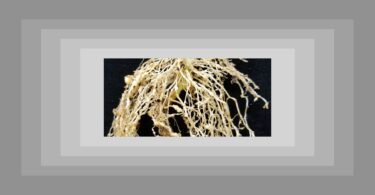
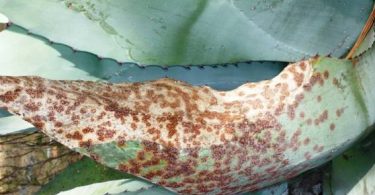


Thank you for helping me with my lilac bush. If the lilac tree’s problem is indeed Pseudomonas syringae, might homeopathic Pseudomonas help? I coincidently just bought it in 30c last month for a totally different problem (in a human)!
In pomgranate for bacterial blight disease which homeopathy medicine will be used? Please tell me sir
For fruit boarer also
Hello Mr. Radko Tichavsky
I live in Hungary and I have a peach tree in my garden that this year look realy bad;looks like he’s dying.
Can be saved with homeophatic treatment?
Dear Dr Tichavsky Can you please help me getting rid of the weed wandering jew with homeopathy. Its all over my garden and also along most of our waterways. I live in Melbourne Australia, Thank you Ingrid